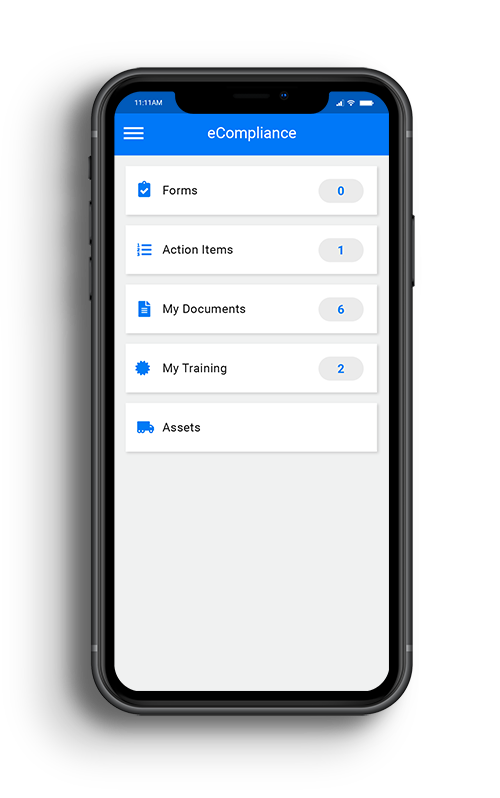
Share this Post
PUBLISHED
February 21, 2023
READ TIME
7 Minutes
WRITTEN BY
![]() Dina Adlouni
Dina Adlouni
Dina is the resident Content Writer at EcoOnline North America . When she’s not writing about health and safety, you’ll find her enjoying a cup of tea while watching her favorite sitcom.
Show your commitment to safety and stand out within your industry with the help of the Certificate of Recognition (COR). Achieving COR certification can help elevate your health and safety program, as you must meet specific standards set within your province in Canada. There are 13 elements which are universal across the country, ranging from hazard analysis and safe job procedures to emergency preparedness and preventative maintenance.
Learn more about COR as we dive into:
- Certificate of Recognition (COR) – What is it?
- Benefits of COR
- Is COR Mandatory?
- What are the COR audit stages?
- What are the elements of COR?
- How EcoOnline can help
Certificate of Recognition (COR) – What is it?
The Certificate of Recognition (COR) shows that your health and safety program has been assessed by an external and internal auditor and has met the Occupational Health and Safety (OHS) standards set for your province. Requirements can vary depending on where you are located, so make sure you are aware of what guidelines you need to follow. Once your organization is certified, your certification is valid for three years.
COR was updated to COR 2020 to be more aligned with ISO 45001, with four new sections which include: Procurement and Change Management, Contractor Management, Control of Documents, and Control of Records. This modification will help organizations take a more holistic approach to safety to effectively reduce incidents and injuries on site.
Benefits of COR
There are several benefits to achieving COR which can help your organization overall. These include, but are not limited to the following:
A safer work environment
There are many elements which need to be met when you are going through the COR journey, ranging from workplace inspections to company rules. Both an internal and external audit are also conducted throughout the process, ensuring that you meet every requirement. This forces you to identify the gaps and weaknesses which may be present in your safety program and develop an action plan to improve them.
Following the OHS standards in your province will help you create a safer work environment. This will ultimately protect your employees and foster a stronger safety culture among the workforce.
Potential cost savings
In addition to potentially increasing your return on investment with greater opportunities, you could also save money with COR. Organizations who are certified could qualify for a rebate on workers’ compensation premiums, depending on where they are located. With a stronger safety program, you will also hopefully have fewer incidents and injuries. This will reduce the potential for shutdowns, increase efficiency, and result in less fines or insurance costs.
Greater credibility within your industry
Gain greater credibility among your peers with COR! Being COR certified demonstrates your dedication and commitment to a safe workplace within your industry. This helps you stand out amongst your competitors as an organization who puts health and safety first and who always works to improve and refine your safety program. With such a strong foundation and method of continuous improvement, your organization can certainly gain a competitive advantage within your industry.
More opportunities
COR certification can open the door to greater opportunities. How? It can help you win greater bids/tenders against others as you have a strong safety record and sense of credibility within your organization.
High-profile clients like the City of Toronto or Toronto Transit Commission (TTC) for example, will not work with companies who are not COR certified. It’s time to elevate your organization today and increase business opportunities by achieving COR.
Increased employee retention and attraction
Employees will be more attracted and inclined to stay with an organization that values their health and safety. As previously mentioned, COR shows your commitment to a safer workplace and ultimately helps strengthen your safety program. This creates a safer work environment and a stronger safety record which is attractive to any employee working within the industry. Valuing their safety will make people more likely to join or stay with your organization.
To learn more about the benefits of COR, check out our blog: 3 Ways COR Will Help You Achieve Success.
Is COR Mandatory?
You might be thinking, is COR mandatory? The short answer is no. COR is currently a voluntary endeavor organizations can take to help strengthen their health and safety programs. As previously mentioned, there are several benefits to achieving COR which makes it an attractive certification for many organizations in Canada.
What are the COR audit stages?
COR is a journey which usually takes between 2-3 years to complete. The audit cycle can be divided into three stages, according to the Infrastructure Health and Safety Association (IHSA):
- Year 1: During the first year, the employer must collect a year’s worth of documents needed to prove they are fulfilling all COR requirements. An internal audit is then conducted by an approved employee and submitted. If certain requirements are met, an external IHSA auditor will be assigned to conduct an audit on the organization.
- Year 2-3: During the second and third year, another internal audit must be conducted to maintain the organization’s standing. All documents and records must also be submitted, along with a written report.
- Year 4: Once the third year is completed, the COR cycle comes to an end. If employers wish to maintain their certification, they must begin the cycle again.
What are the elements of COR?
The Certificate of Recognition contains 14 elements. Here’s a high-level summary of the elements of COR:
1. Company health and safety policy: This entails your organization’s health and safety policy statement and also involves your management team’s commitment to safety.
2. Workplace hazard assessment and control: Hazard assessment entails that you have assessed all hazards in the workplace and that the necessary controls have been put in place.
3. Safe work practices: Evaluate all operations and practices within your organization and implement corrective actions based on your findings.
4. Safe job procedures: In this portion job procedures must be assessed to ensure you are creating a safe work environment. This can be done through employee interviews, behavior-based safety observations and more.
5. Company rules: This element includes the fact that all company rules must be documented and communicated to employees.
6. Personal protective equipment: Employers must prove that the right personal protective equipment (PPE) is provided to employees. Training must also be offered to all to learn how to properly use and maintain the necessary PPE.
7. Preventative maintenance: Preventative maintenance measures must be conducted and documented on all tools, machinery, equipment, and vehicles within the workplace.
8. Training and communication: Employers must provide the proper training to their employees and document training materials, certifications, and more. This must also be properly communicated at a regular cadence with employees.
9. Inspections: This element includes conducting and documenting inspections, including what corrective actions have been put in place to rectify nonconformances.
10. Investigations and reporting: Proof of investigations conducted and reporting must be presented to give greater insight into your organization’s safety performance.
11. Emergency preparedness: Share your emergency preparedness plan which documents what policies, procedures, and training have taken place to mitigate risks related to an emergency.
12. Records and statistics: Employers must provide all records and statistics gathered in the previous 12 months.
13. Legislation: This element entails meeting all legislative requirements and posting the necessary posts on your safety boards.
14. Joint occupational health and safety committee: Finally, this element relates to the exposure of harmful substances. Employers must have an awareness program and training in place for all employees related to reduce such risks.
Additional obligations may be required depending on your province, so make sure you are aware of all the elements of COR based on your location.
How EcoOnline Can Help
eCompliance, part of EcoOnline Global, is an EHS management solution that can help you streamline the COR process. With the user-friendly Programs Tab, you can stay on top of all requirements needed and store all documentation related to COR under the corresponding element. This offers guidance on each element and makes it easy to find and access the necessary information in seconds during an inspection. eCompliance also allows you to provide virtual access of all your supporting documents to an external auditor.
In addition to housing and centralizing all documentation and records, eCompliance gives you 360-degree transparency into your safety program. This makes it easy for you to pinpoint gaps and nonconformances in your safety program and prioritize key corrective actions. Our robust reporting engine enables you to track key trends in real-time and easily share the information with an external auditor.
Fill out the form below or speak to one of our EcoOnline representatives to learn more about how we can help you achieve COR.
Learn How You Can Get EcoOnline
Complete this form and one of our safety experts will be in touch.

